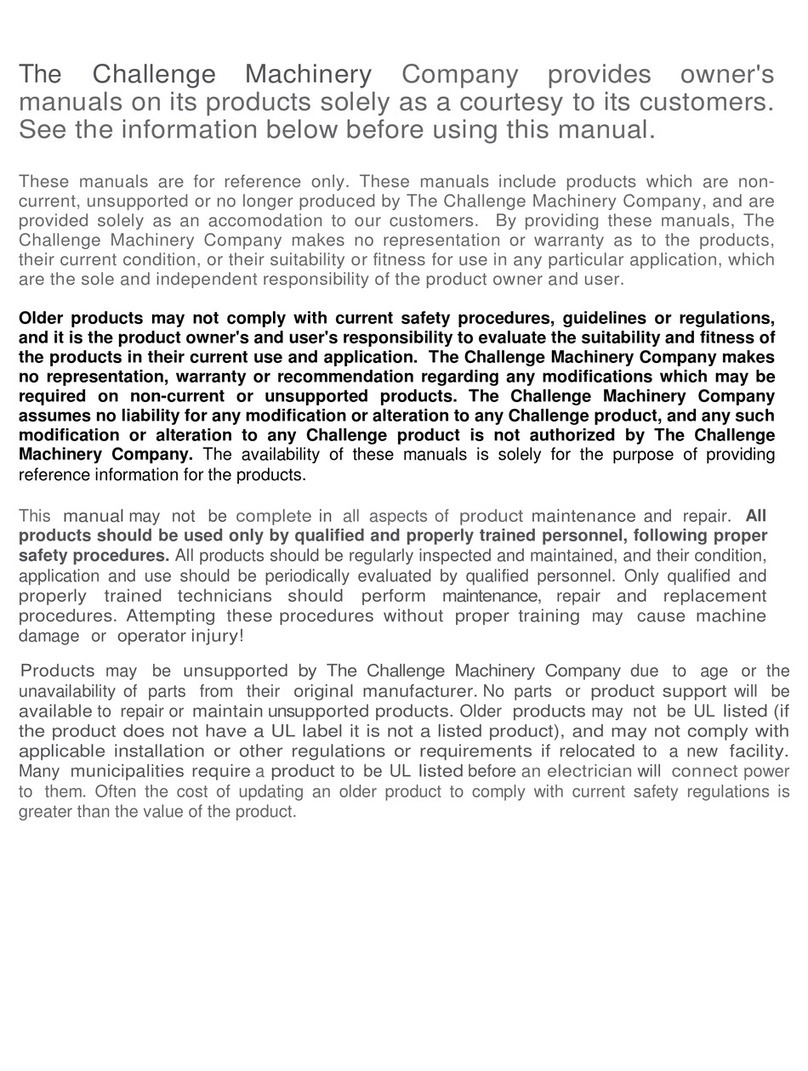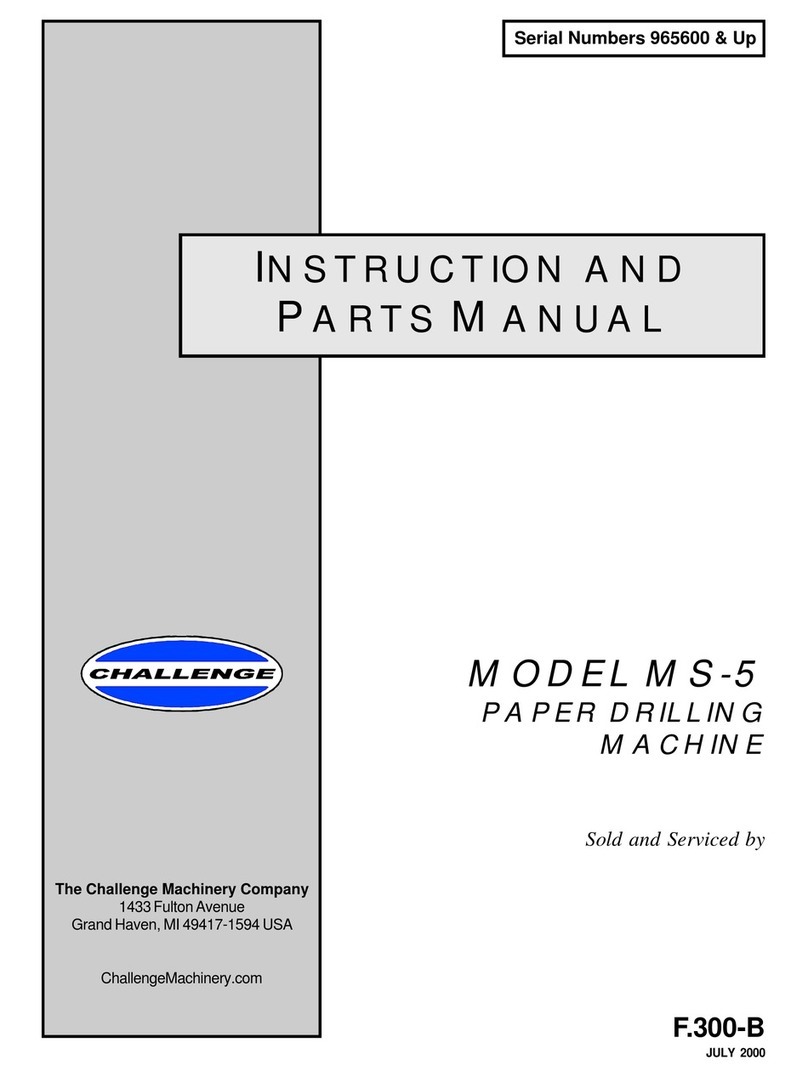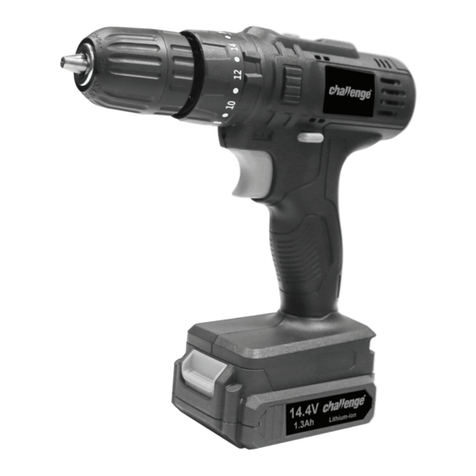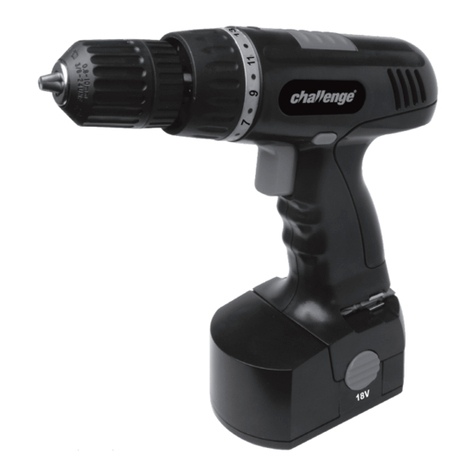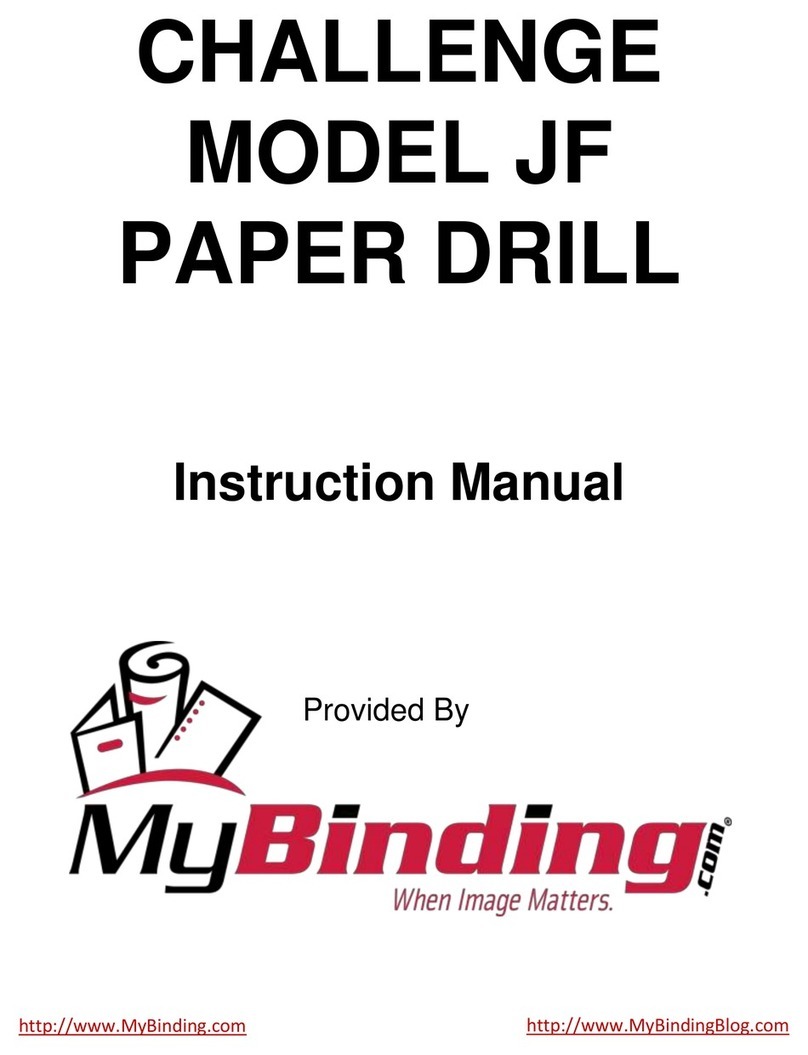
9
F.330-J/APR 97
Operating the Drill
First, be sure that the switch is turned on. Depressing
the foot treadle brings the drill down through the lift of
stock. After the drill reaches the bottom of its stroke,
release the treadle and the drill return to its top position.
The foot treadle can be released at any time during the
downward stroke of the drill, thus preventing costly
errors. Never rest your foot on the treadle without
intending to bring down the drill.
Using the Auto-Trip Side Guide
As each hole is drilled, the side guide is automatically
tripped, and as soon as the drill clears the stock on its
upstroke, the guide is free to move to its next stop.
This is accomplished by pushing the stock to the left
and moving the guide at the same time. When drilling
only one hole jobs, when slotting, or when cornering,
the automatic trip arm should be locked in its up position
by tightening the thumbscrew.
Setting the Side Guide Stops
First set the rear gage to the desired back margin. Be
sure both sides are set to the same dimension and
tighten the two thumbscrews. Next, loosen the set
screws which hold the stops in place and slide the stops
to the desired dimension between holes (a scale in the
backgage is provided for this purpose). The first stop
is always set for the distance from the edge of the sheet
to the center of the first hole. Final adjusting or centering
of the holes is accomplished with the knurled screw at
the left end of the side guide arm. Loosening the finger
screw on the top of the side guide arm allows the
knurled screw to be turned in or out thus increasing or
decreasing the distance to the centerline of the drill
(and hole). Before drilling a full lift of stock, it is
recommended that a sample sheet be drilled and
measured to check this fine adjustment. Be sure that
the finger screw is retightened before drilling.
The automatic trip gage comes equipped with seven
stops. Additional stops can be purchased at a very
nominal price. Challenge fixed index gages are
recommended where the same job is to be handled
over and over again. They are easily and quickly
attached and removed. See page 25 for more details.
NOTE: When drilling narrow strips, the side guide roller
assembly should be mounted on the inside of the side
guide assembly.
ROUTINE ADJUSTMENTS
Adjusting the Vertical Stroke
Always turn the adjustment rod in (clockwise) all the
way when changing drills (fig. 2, pg. 8). With the new
drill in place, turn the adjustment rod out (counter
clockwise) in small increments until the drill will just cut
through the bottom sheet of a lift before reaching the
bottom of its stroke. Do not set the spindle so low that
the drill “burns” into the cutting block at the bottom of
its stroke.
It is important to adjust the vertical stroke whenever
changing drills or when slotting or cornering. This will
prevent the drill or knife from cutting too deep into the
cutting block.
Removing the Cutting Block
To remove the cutting block, simply reach under the
table and push up on the cutting stick knockout.
Removing Drills from the Chuck
Insert the drill drift, flat side down, into the hole in the
chuck and lift upward. The upward movement forces
the drill down and releases it from the chuck. The spring
clip on the end of the chuck is provided to cover the
drift hole and prevent paper chips from flying out when
drilling small diameter holes.
NOTE: Sometimes the drills become so firmly seated
in the chuck that it is necessary to tap on the drift to get
the drill to release.
ROUTINE MAINTENANCE
Service Checklist
Daily
1. Sharpen the hollow drill often and reset the spindle
adjustment rod if needed.
2. Lubricate the hollow drill frequently with the Drill-
ease provided.
3. For better hollow drill life, remove the drill when
not in use and soak in light oil or kerosene.
CAUTION: Always handle drills with
care to avoid severe lacerations. Even
dull drills are sharp enough to cause
lacerations.
